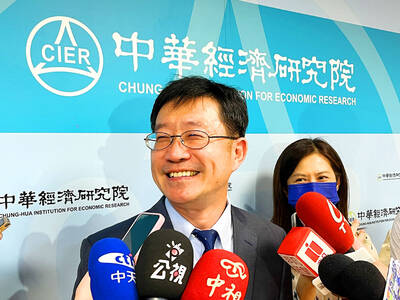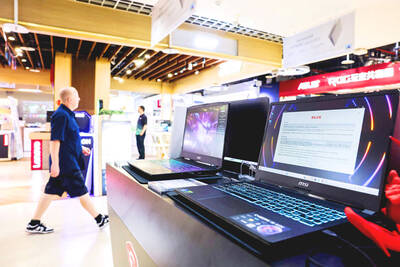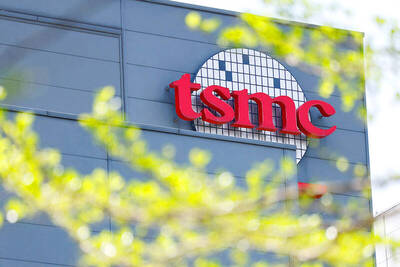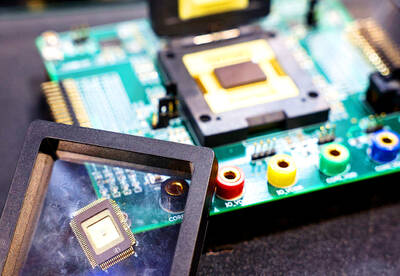It’s a simple pleasure, but Xu Beilu savors it daily: gliding past snarled traffic on her motorized bicycle, relaxed and sweat-free alongside the pedal-pushing masses.
China, the world’s bicycle kingdom — one for every three inhabitants — is going electric.
Workers weary of crammed public transport or pedaling long distances to jobs are upgrading to battery-powered bikes and scooters. Even some who can afford cars are ditching them for electric two-wheelers to avoid traffic jams and expensive gasoline.
The bicycle was a vivid symbol of China in more doctrinaire communist times, when virtually no one owned a car. Even now, nearly two decades after the country began its great leap into capitalism, it still has 430 million bicycles by government count, outnumbering electric bikes and scooters 7-1.
But production of electric two-wheelers has soared from fewer than 200,000 eight years ago to 22 million last year, mostly for the domestic market. The industry estimates about 65 million are on Chinese roads.
CHEAP, CONVENIENT
Car sales are also booming but there are still only 24 million for civilian use, because few of the 1.3 billion people can afford them. And unlike in many other developing countries, Chinese cities still have plenty of bicycle lanes, even if some have made way for cars and buses.
“E-bike” riders are on the move in the morning or late at night, in good weather or bad. When it’s wet, they are a rainbow army in plastic capes. On sunny days, women don gloves, long-sleeved white aprons and face-covering sun guards.
One of them is Xu, on her Yamaha e-bike, making the half-hour commute from her apartment to her job as a marketing manager.
“It’s obvious that driving would be more comfortable, but it’s expensive,” she says. “I like riding my e-bike during rush hour, and sometimes enjoy a laugh at the people stuck in taxis. It’s so convenient and helpful in Shanghai, since the traffic is worse than ever.”
The trend is catching on in the US and elsewhere.
In Japan, plug-in bicycles are favored by cost-conscious companies and older commuters.
“Many company workers are beginning to use them to visit clients instead of driving, to save fuel costs,” says Miyuki Kimizuka of the Japan Bicycle Promotion Institute, a private industry group.
Australians use electric bicycles in rural towns without bus and train service. Tony Morgan, managing director of The Electric Bicycle Co Pty Ltd, the continent’s largest manufacturer and retailer of e-bikes, says he has sold about 20,000 in the past decade, priced at A$1,000 (US$800) to A$2,000.
In the bicycle-friendly Netherlands, the industry says sales passed 138,800 last year.
In India, Vietnam and other developing countries, competition from motorcycles, as well as a lack of bike lanes and other infrastructure, are obstacles.
Indian sales have risen about 15 percent a year to 130,000 units, thanks in part to a 7,500 rupee (US$150) government rebate that brings the cost down to about the cost of a conventional bicycle. But they are far outnumbered by the millions of new motorcycles taking to India’s roadways.
In China, electric bikes sell for 1,700 yuan (US$250) to 3,000 yuan. They require no helmet, plates or driver’s license, and they aren’t affected by restrictions many cities impose on fuel-burning two-wheelers.
It costs a mere 1 yuan (US$0.15) — about the same as the cheapest bus fare — to charge a bike for a day’s use, says Guo Jianrong (郭建榮), head of the Shanghai Bicycle Association, an industry group.
They look like regular bicycles, only a bit heavier with the battery strapped on. Some can be pedaled; others run solely on battery. In China, their maximum weight is about 40kg, and maximum legal speed is about 20kph.
“For us, these are tools for transportation,” Guo said. “We’re not like Americans and Europeans, who tend to bicycle for fun or exercise.”
BAD ACID
The e-bike doesn’t emit greenhouse gases, though it uses electricity from power plants that do. The larger concern is the health hazards from production, recycling and disposal of lead-acid batteries.
Although China is beginning to turn out more electric bikes equipped with nickel-meter-hydride and lithium-ion batteries, 98 percent run on lead-acid types, Guo said.
A bike can use up to five of the batteries in its lifetime, said Christopher Cherry, a professor at the University of Tennessee at Knoxville who researches the industry. A Chinese-made battery containing 10kg of lead can generate nearly 7kg of lead pollution, he says.
“Electric bikes result in far more emissions of lead than automobiles. They always use more batteries per mile than almost any other vehicle,” Cherry said in a phone interview.
In China, owners are paid about 200 yuan (US$30) to recycle old batteries but the work is often done in small, under-regulated workshops.
With price competition brutal among China’s 2,300 electric bike and scooter makers, manufacturers have shied away from embracing costlier, cleaner technology. But bigger foreign sales and demand for better batteries may speed improvements.
“We are trying to upgrade to lithium battery technology to be able to sell internationally,” said Hu Gang (胡剛), a spokesman for Xinri E-Vehicle Group Co, the country’s biggest e- bike manufacturer, with sales of more than 2 million units last year.
The goal is to boost production to more than 5 million units by 2013, he said.
“It’s not that we’re that ambitious,” Hu said. “It’s just that the industry is growing so quickly.”

WEAKER ACTIVITY: The sharpest deterioration was seen in the electronics and optical components sector, with the production index falling 13.2 points to 44.5 Taiwan’s manufacturing sector last month contracted for a second consecutive month, with the purchasing managers’ index (PMI) slipping to 48, reflecting ongoing caution over trade uncertainties, the Chung-Hua Institution for Economic Research (CIER, 中華經濟研究院) said yesterday. The decline reflects growing caution among companies amid uncertainty surrounding US tariffs, semiconductor duties and automotive import levies, and it is also likely linked to fading front-loading activity, CIER president Lien Hsien-ming (連賢明) said. “Some clients have started shifting orders to Southeast Asian countries where tariff regimes are already clear,” Lien told a news conference. Firms across the supply chain are also lowering stock levels to mitigate

IN THE AIR: While most companies said they were committed to North American operations, some added that production and costs would depend on the outcome of a US trade probe Leading local contract electronics makers Wistron Corp (緯創), Quanta Computer Inc (廣達), Inventec Corp (英業達) and Compal Electronics Inc (仁寶) are to maintain their North American expansion plans, despite Washington’s 20 percent tariff on Taiwanese goods. Wistron said it has long maintained a presence in the US, while distributing production across Taiwan, North America, Southeast Asia and Europe. The company is in talks with customers to align capacity with their site preferences, a company official told the Taipei Times by telephone on Friday. The company is still in talks with clients over who would bear the tariff costs, with the outcome pending further

Six Taiwanese companies, including contract chipmaker Taiwan Semiconductor Manufacturing Co (TSMC, 台積電), made the 2025 Fortune Global 500 list of the world’s largest firms by revenue. In a report published by New York-based Fortune magazine on Tuesday, Hon Hai Precision Industry Co (鴻海精密), also known as Foxconn Technology Group (富士康科技集團), ranked highest among Taiwanese firms, placing 28th with revenue of US$213.69 billion. Up 60 spots from last year, TSMC rose to No. 126 with US$90.16 billion in revenue, followed by Quanta Computer Inc (廣達) at 348th, Pegatron Corp (和碩) at 461st, CPC Corp, Taiwan (台灣中油) at 494th and Wistron Corp (緯創) at

NEGOTIATIONS: Semiconductors play an outsized role in Taiwan’s industrial and economic development and are a major driver of the Taiwan-US trade imbalance With US President Donald Trump threatening to impose tariffs on semiconductors, Taiwan is expected to face a significant challenge, as information and communications technology (ICT) products account for more than 70 percent of its exports to the US, Chung-Hua Institution for Economic Research (CIER, 中華經濟研究院) president Lien Hsien-ming (連賢明) said on Friday. Compared with other countries, semiconductors play a disproportionately large role in Taiwan’s industrial and economic development, Lien said. As the sixth-largest contributor to the US trade deficit, Taiwan recorded a US$73.9 billion trade surplus with the US last year — up from US$47.8 billion in 2023 — driven by strong